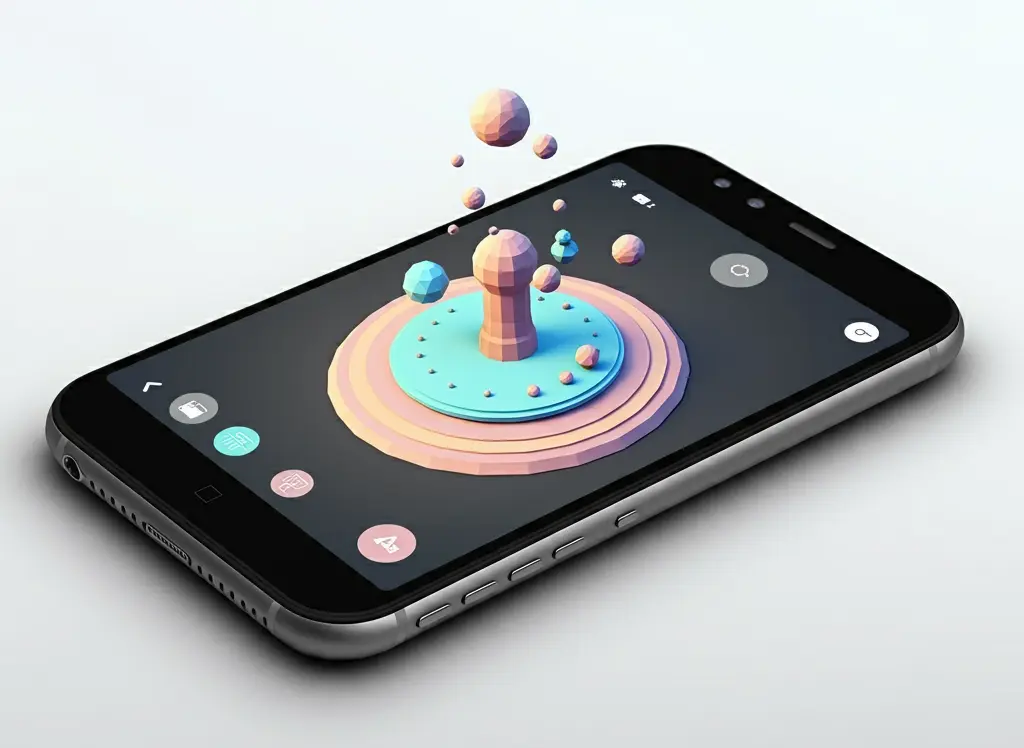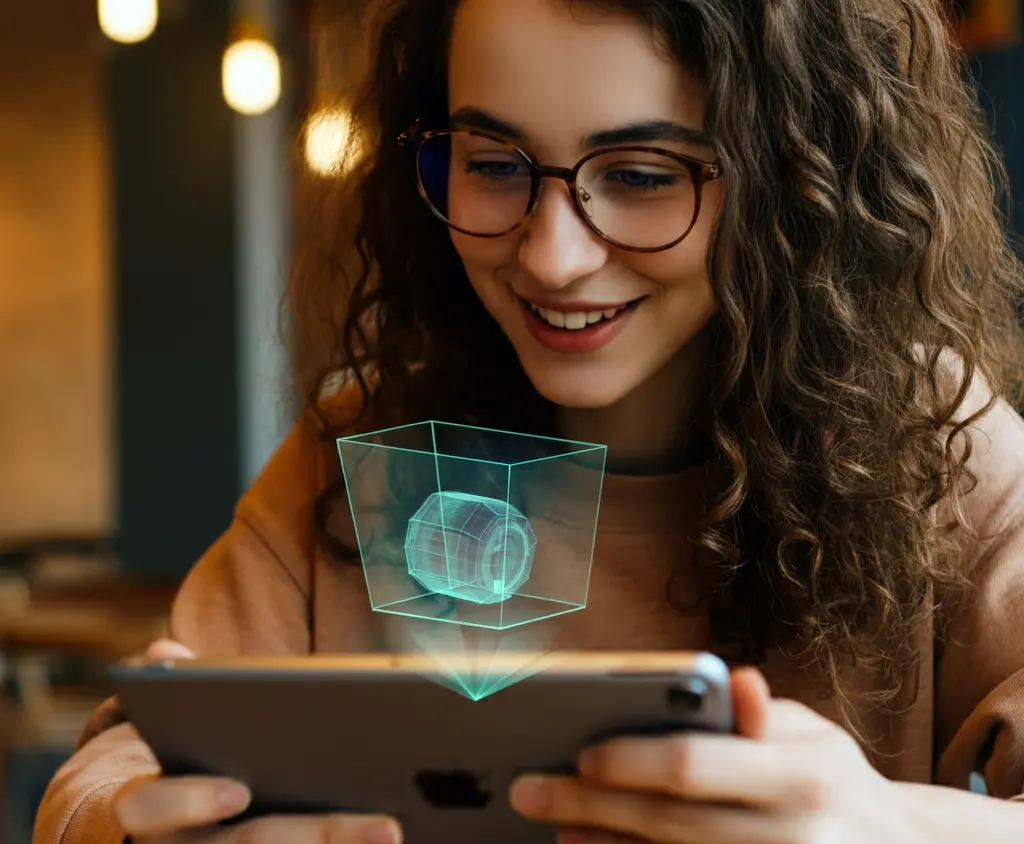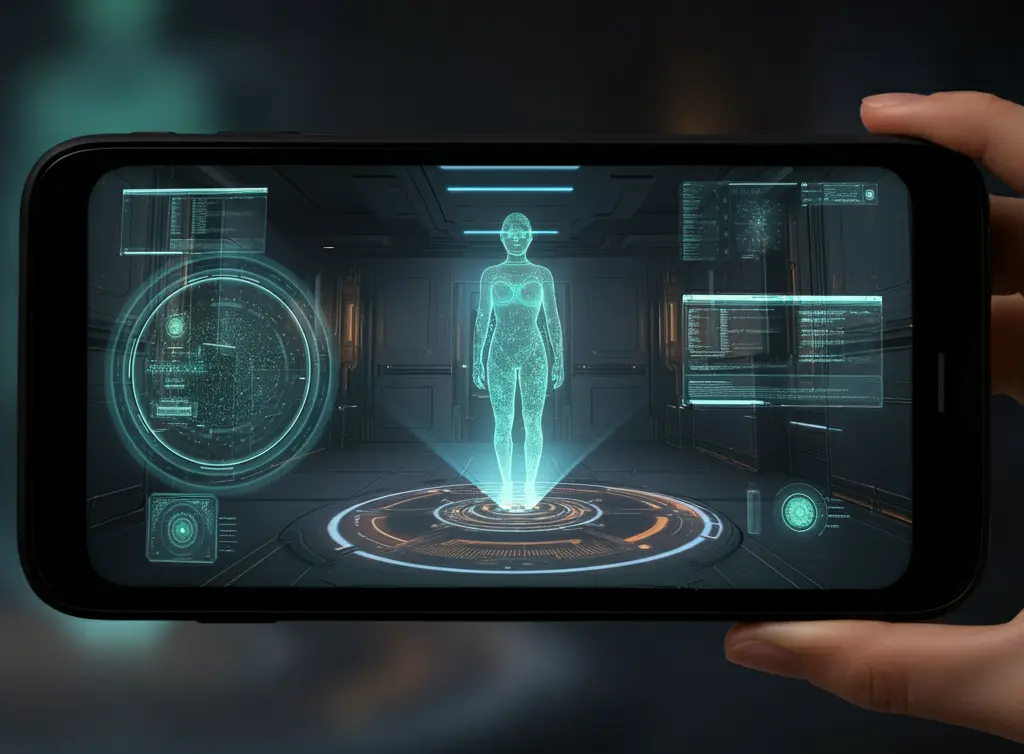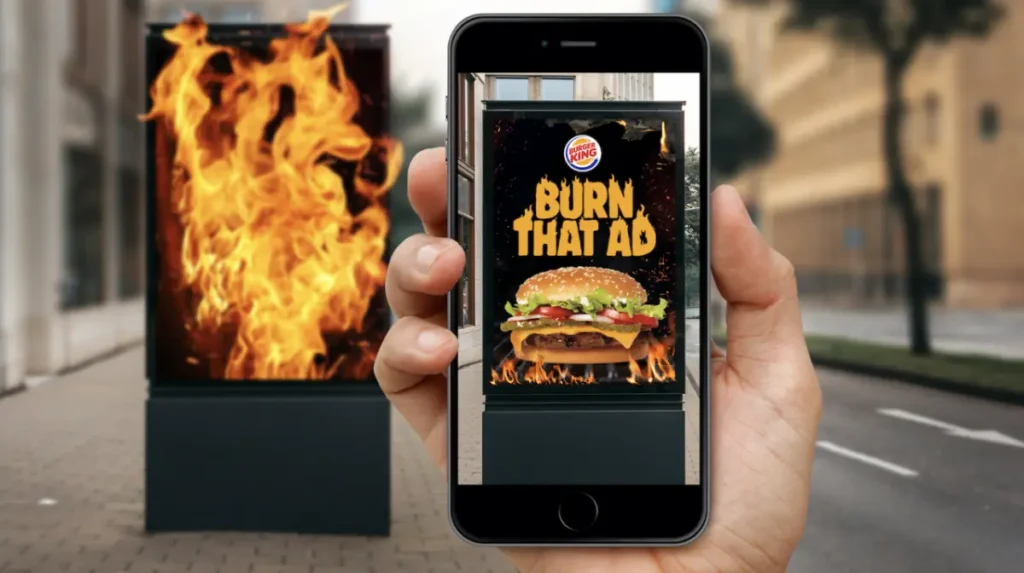Augmented Reality Marketing: Creating Brand Experiences
You're walking down the street, smartphone in hand, and boom – the world around you erupts into a fantasy.
That drab brick wall? It's now a screen for a dazzling mural that no one else but you can see. That bus stop? A gateway to another dimension, imploring you to step into the universe of a brand.
Welcome to the brave new world of augmented reality marketing.
It's not about slapping a digital moustache on your selfie anymore.
AR is the paintbrush that's redrawing the lines between the physical and digital worlds, and innovative brands are grabbing it with both hands.
Why? Because in a world where attention is the scarcest resource, AR doesn't just capture eyeballs – it sets imaginations ablaze.
It turns passive consumers into active participants and mundane moments into magical experiences.
But here's the catch: AR is not the magic wand.
It's a tool, and just like with any other tool, the power doesn't lie with the technology behind it; it lies with what we do with it.
The winners in this new reality won't be those with the most radical effects or significant budgets.
They are the ones who will appreciate that AR is only a new way to do what great marketing has always done: tell a story, make a connection, and leave a mark.
Ready to step through the looking glass?
Let's look at how augmented reality marketing is rewriting all the rules in brand experiences – one pixel at a time.
- Augmented Reality (AR) transforms marketing by creating immersive experiences that engage customers in new ways.
- Brands leveraging AR drive higher engagement and sales through innovative strategies like virtual try-ons and interactive storytelling.
- The future of AR marketing includes advancements like 5G integration and AI to enhance user experiences beyond traditional methods.
- What's All the Fuss About AR Marketing?
- The Nuts and Bolts of AR Marketing
- The Power of AR in Marketing
- The Psychology of AR Marketing: Why It Works
- AR Marketing Metrics: Measuring Success
- Challenges and Limitations of AR Marketing
- The Future of AR Marketing: What's Next?
- How to Get Started with AR Marketing
- Best Practices for AR Marketing
- Case Studies: AR Marketing Success Stories
- Conclusion: The AR-mazing Future of Marketing
- FAQs
What's All the Fuss About AR Marketing?

Think of that: browsing on your phone and bingo – you can try on a pair of trainers without leaving your sofa.
Or you're walking down the high street, and suddenly, your favourite coffee shop's logo springs to life, leading you to find a discount hidden somewhere.
That's AR marketing magic, like sprinkling digital fairy dust on the real world.
The AR Revolution: It's More Than Pokemon Go
Remember when it seemed like everyone and their gran were running around town chasing virtual creatures? Well, that was just the tip of the iceberg.
AR has grown up since then, and it's not just for gaming anymore.
It's become a powerful tool for brands to create immersive, interactive experiences that blur the lines between the digital and physical worlds.
Why should you care?
For a marketer, AR may be the ace up your sleeve.
If you are a consumer, it is about making the shopping experience much more enjoyable.
And if you're curious about the future, AR marketing hints at how we will interact with brands in the years to come.
The Nuts and Bolts of AR Marketing
So, how does this digital wizardry work? Let's break it down without getting too techie.
AR 101: The Basics
The core of this concept, augmented reality, overlaps digital information with the real world.
You wear some form of transparent screen between you and reality on which virtual objects can pop up, taking in what you see.
- Cameras and Sensors: These are the eyes of AR, capturing the real world.
- Processing Power: This is the brain of your device, figuring out where to place virtual objects—display: Where it all happens. The screen shows the real world with digital elements composited into it.
- AR Software: This digital orchestra's conductor ensures everything integrates seamlessly.
Types of AR Experiences
Not all AR is created equal. Here are the primary flavours:
- Marker-based AR uses a specific image to start the AR experience.
- Markerless AR does not use an image but relies on GPS or another sensor to position virtual objects.
- Projection-based AR projects digital images onto actual surfaces. Superimposition-based AR replaces a partial or complete object with an enhanced view of itself.
The Power of AR in Marketing
Now, on to the juicy bit: how AR pushes the limits of marketing strategies and customer engagement.
Try Before You Buy: The Virtual Dressing Room

Now, one will not have to guess whether that sofa will fit in the living room or if that shade of lipstick suits you.
AR lets customers virtually try on products in their space or on their faces. It's like having a magic mirror or even a shape-shifting room.
Case Study: IKEA Place
IKEA's AR app lets you place virtual furniture in your house. No more measuring tapes or imaginations are called for – just aim your phone where you think that BILLY bookcase will look in your study.
Animating Packaging
Picture picking up a bottle of wine and having the label morph into a video about the vineyard. Or scan a cereal box and start playing an interactive game. AR is turning everyday packaging into a storytelling and engagement canvas.
Wow Factor: Guinness AR Experience
Guinness used AR to turn their beer cans into a portal to the brand's history. Scan the can, and you're transported to a virtual St. James's Gate Brewery tour. Now, that's what I call a happy hour!
Location-Based AR Marketing: The High Street Revolution
It's breathing life into every brick-and-mortar store. By overlaying digital information in physical spaces, brands can create unique location-based experiences leveraging online and offline shopping.
Example: AR Fashion Show by Zara
Zara created virtual catwalks in its shop windows. Customers saw, via their phones, models strut around in its latest collections as they stood in front of empty shop windows. It's just like the front row at Fashion Week, minus attitude.
The Psychology of AR Marketing: Why It Works

For a second, let's get inside his head. Why does AR marketing manage to pack such a punch?
The Power of Immersion
AR introduces this feeling of presence-you're not just looking at a product; you're messing with it in your own space—the more immersive the experience, the larger the emotional connection and the higher the engagement rate.
Novelty and Surprise
Our brains love novelty. AR experiences trigger the release of dopamine, the feel-good neurotransmitter associated with pleasure and reward. It's like unwrapping a gift every time you launch an AR app.
Reduced Cognitive Load
By visualising products in context, AR reduces the mental effort required to imagine how something looks or works. This makes decision-making more straightforward and more confident.
AR Marketing Metrics: Measuring Success
How can you tell whether your AR campaign is working or not? Here are a few of the key metrics you should watch:
- Engagement Rate: How much time are users spending with your AR experience?
- Conversion Rate: Do AR users convert more, meaning they purchase something?
- Share Rate: The percentage of how often your AR content is shared through social media.
- Return on Investment: Do the benefits outweigh the costs of AR implementation?
AR Marketing KPIs
| Metric | Description | Target |
| Engagement Time | Average time spent with AR content | >2 minutes |
| Conversion Rate | Percentage of AR users who make a purchase | >15% |
| Share Rate | Percentage of users who share AR content | >5% |
| ROI | Return on AR marketing investment | >200% |
Challenges and Limitations of AR Marketing
It's not rainbows and unicorns in the AR world. Let's look at some hurdles brands face when implementing AR marketing strategies.
Technical Limitations
Not everybody has the most up-to-date smartphone or tablet. Ensuring your AR experience works across various devices can be tricky and expensive.
User Adoption
While AR is cool, users must download apps or use particular platforms. Getting them to take that extra step can be problematic.
Creation Costs
Creating first-class AR experiences is a costly undertaking. It usually requires specialised skills and sometimes heavy financial investments.
Privacy Issues
Most often, AR applications presuppose access to cameras and location. In an age when awareness about privacy is on the rise, that may become a turn-off for some users.
The Future of AR Marketing: What's Next?

Buckle up because the future of AR marketing will shine brighter than a supernova. Here's what will take place with AR marketing in the future:
5G and AR: A Match Made in Digital Heaven
With the highly accelerated 5G rollout, AR experiences will get even quicker, slicker, and fancier. Real-time AR overlays responding to your environment instantly? Think so.
AR and AI: The Dynamic Duo
AI makes AR bright. AR experiences will adapt in real time to respond to user behaviour and preferences shortly.
Wearable AR: Beyond the Smartphone
Designs for AR glasses and contact lenses are already being developed. When those devices hit the mainstream, they will completely alter how we engage with brands as part of everyday living.
Haptic Feedback: Feel the Experience
Tactile AR is on its way. Just imagine seeing that virtual product and feeling its texture and weight.
How to Get Started with AR Marketing
Are you ready to take the plunge in the AR marketing pool?
Here is a fast-track guide to get you on this journey.
First, set your objectives. What do you want to accomplish through AR?
Next, know your audience. Are they tech-savvy? What device are they carrying?
Then, pick the right platform.
There are several AR development platforms—research which suits your needs best.
Lastly, start small. Create a simple first-time AR experience.
Follow up with the metrics mentioned above to gauge performance and improve.
Best Practices for AR Marketing
Let your AR marketing campaigns shine brighter than a diamond in the rough by keeping the following best practices in mind:?
- Keep it Simple: Avoid making it complex for users.
- Make it Shareable: Integrate it with social media, making the reach bigger.
- Deliver Value: Your AR should be able to solve some problem or add real value.
- Optimise for Performance: Smooth operation across different devices.
- Integrate with Other Marketing Channels: AR is supposed to support your overall strategy.
Case Studies: AR Marketing Success Stories
AR is no longer a gimmick; it's a potent way for brands to create memorable experiences and drive actual results.
But here's the thing: most companies are still stuck in the old paradigm of interruption marketing, shouting at customers instead of inviting them to play.
The brands that get it right understand a fundamental truth: people crave experiences, not just products.
Pepsi Max's “Unbelievable Bus Shelter.”
They weren't only selling soda. They took a ho-hum bus wait and turned it into a moment of magic and surprise. Tigers and robots and UFOs, oh my! It spread like wildfire because it was worth talking about.

Sephora's Virtual Artist app?
It solves a real problem—no more guesswork on whether that lipstick shade works for you. Try before you buy, right from your phone. But it's not just fantastic technology – it's driving 1.5x more purchases from AR users.
And Burger King?
They leaned into the conflict. “Burn that ad,” they said. It's cheeky. It's memorable. And it puts a free Whopper in your hands.
These campaigns work because they're not trying to interrupt. They're creating experiences people want to engage with.

The lesson?
Stop thinking about how to grab attention and start thinking about how to earn it.
AR gives us new tools, but the principles remain the same:
- Solve a real problem
- Create something worth talking about
- Make it fun and easy to engage
And the winners won't be those having the most significant AR budget. They will be those that allow AR to drive real value and memorable moments.
Ready to join the AR revolution? Or stay behind and continue yelling at customers who learned how to tune you out?
Conclusion: The AR-mazing Future of Marketing
AR marketing is not a fad – it's a change in how brands connect with consumers. AR bridges the gap between digital and physical, making memories that evoke more engagement, sell more, and create greater loyalty for any brand.
Where AR marketing might go is only constrained by our imaginations as technology continues to get better. From virtual try-ons to interactive storytelling, augmented reality opens new customer engagement frontiers.
But let's remember, as exciting as it might be, the fundamentals of good marketing are the same: know your audience, deliver value, and always work toward meaningful connections. AR is another tool in your marketing toolbox-ditto for a pretty cool one.
So, are you ready to step into this future of marketing? The augmented reality revolution is here, and it's time to get on board. Your next marketing campaign makes jaws drop and sales soar. Welcome to the new reality of marketing, augmented and amazing.
FAQs
Is AR marketing only for big brands with big budgets?
No! While some AR experiences are expensive, there are other options out there that businesses of all sizes can afford. Start small and scale up as you begin seeing results.
Should I hire a team of developers to create AR marketing campaigns?
Not necessarily. Many platforms have made it accessible to users without deep technical knowledge by offering user-friendly AR experience creation tools. Professionals can assist with more advanced projects.
How do I measure the ROI of AR marketing?
Engagement time, conversion rates, and social shares are vital metrics. Most AR platforms offer analytics for performance tracking as well.
Would AR marketing work for my B2B company?
Of course, it would! AR can be used in product demos, virtual facility tours, or interactive training pieces B2B contexts find helpful.
Isn't this all just a flash in the pan?
It may be a novelty, but its practical uses and track record of results indicate that it is a channel that will only continue to improve.
Does a user need any particular equipment to experience AR marketing?
Generally speaking, there is no more than a smartphone or tablet. Still, as AR technology evolves, specialised devices could become commonplace.
How can I ensure my AR marketing is available to all users?
Offer alternative access to the same information; ensure your AR experiences work on various devices; and test with multiple user groups.
Does AR marketing help to improve customer retention?
Yes! AR experiences offer an opportunity to create truly memorable brand interactions, foster repeat engagement, and, in some cases, continuously offer value to customers.
For which industries does AR marketing most help?
While AR can be used across industries, it's particularly effective in retail, real estate, tourism, education, and entertainment.
How often should I refresh my AR marketing experiences?
Regular updates keep users engaged and coming back. This depends on your resources and objectives, but try for quarterly refreshes.
Can AR marketing help with SEO?
Indirectly, it can. AR experiences can help raise time on the site or app, increase engagement, and produce shareable content – all factors that stand to help out with SEO.

